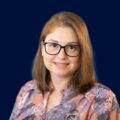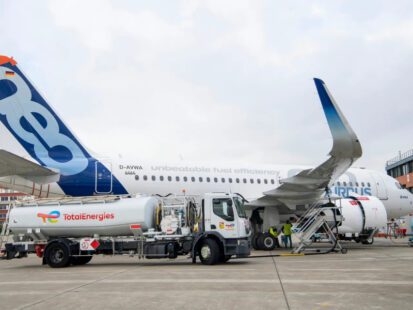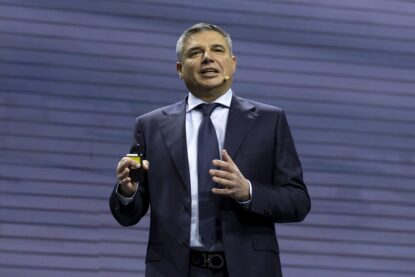
“Managing energy transitions is as complicated as upgrading a Swiss precision clock without first stopping it from working. Collective collaboration of all the moving parts is key.”
It’s an apt analogy proposed by Jeroen van Hoof, Global Energy Utilities & Resources leader at PwC and Vice Chair of the 2024 World Energy Congress, who explained why he believes humans are at the centre of the energy transition and need to be for it to be successful.
Van Hoof’s comparison with a Swiss clock demonstrates the fine balancing act required to achieve energy transition, the many moving parts involved in this mammoth task and the small margin for error in its execution.
In fact, van Hoof emphasises that this is not an energy transition, but rather energy transitions, with many sectors needing to change simultaneously if we are to meet Paris goals. “It’s not just a problem of the energy sector, it’s a problem of all the sectors that need to change at once,” he says.
Bridging the gaps
The challenge is immense and often underestimated, and it’s not merely a case of installing more solar panels and you’re done, he adds.
“There are gaps to be addressed, such as the generation gap but also the conversion gap. It’s more than simply about the electrons.”
In terms of converting clean electrons to clean molecules, the quantities required are massive.
Van Hoof explains: “If you would take current European wind and solar production, plus what is planned offshore, if you would transfer all those electrons into hydrogen, it would only be sufficient to fuel five to 10% of the industrial consumption.”
Have you read?
Going green is not black or white says Wärtsilä’s Håkan Agnevall
Navigating the Polish energy transition with PGE’s Wanda Buk
It’s indeed complicated with many facets, such as policy support and subsidies, infrastructure, financing, securing resources, and ensuring the skills necessary to bring it all together.
Van Hoof adds: “You can’t just push a button and speed up.”
But to ensure progress and ultimately redesign energy for people and planet, you need to bring all sectors together, something van Hoof is aiming for at the World Energy Congress in Rotterdam, the Netherlands, in April 2024.
Van Hoof explains that at the heart of all this change and at the centre of managing this disruption in a way that yields desired results is human beings.
He emphasises the importance of what he refers to as the ‘humanising effect’ within the energy transition.
“Energy is important for all of us, it must be available and affordable…it must involve people.
“It goes beyond business, government and finance, it’s about understanding what the energy transitions mean in daily life.”
One must involve the public and encourage buy-in, otherwise, he says, the plan will end as soon as it begins.
To do this, sharing knowledge is essential, van Hoof stresses. It’s not just about speeding up to meet Paris goals. It’s about energy literacy, staying connected, sharing the complexities of the challenge and the impact on daily life.
“As one navigates daily life, whether it be planning to install rooftop PV, considering how to move about, what type transport to opt for or understanding energy consumption patterns — it starts with a consciousness of one’s daily energy footprint.
“There is a disconnect today in that respect,” adds van Hoof.
And it’s time to get everyone involved, NGOs, next gen groups and emerging countries must be involved, connected and bought into affecting change.
I’m a father of four daughters — there’s a next generation to consider. It doesn’t help to polarise more.
Top-down approach
Van Hoof makes it clear that even though energy transitions involve every group and person, it starts at a policy level and to move faster, a more accessible European approach is needed.
“Currently, the European plans around decarbonisation, the funding and schemes that are supporting it are difficult to access and take a long time. Also, project lead times and permitting take a long time. It’s really holding us back.”
He praises the US Inflation Reduction Act because of its accessibility. “It’s like it’s written by business people, so it provides the right incentives to move quicker.”

However, Europe is not the US, he added, and in this region, it’s always more complex to come up with one clear framework which allows orchestration across geographies and sectors.
Interplay between government and companies is also essential, to ensure the right technologies are selected at the right time, allowing the market to play its role.
He does state however that there is no silver bullet in terms of what technologies should be selected or prioritised. “There is no simple one [technology] where you could say, if we pick out this technology and scale it up and put a big subsidy programme around it globally, we’re done. It’s simply not the case.”
Collective challenge
Other than a more accessible policy framework, van Hoof describes what he believes needs to be prioritsed to address the challenge and accelerate progress, and it’s no small feat.
“You’re talking about a Marshall Plantype approach. There’s a collective issue we need to solve, probably the biggest challenge that mankind has faced. Let’s come up with a plan that has a mediumto long-term view.”
“And even though European territories have differing interests and starting points, we have to step over our own shadows to make this happen, governments and companies alike.”
Also of interest
New Managing Director of Siemens Energy France shares her vision for the energy transition
Emma Pinchbeck: driven by a passion for people in the energy transition
Of course, this is easy to say, adds van Hoof, but less easily accomplished. He refers to India as an example with 1.5 billion people. The country is the largest investor in renewables, but is also the largest user of coal.
Van Hoof explains that you can’t simply stop using coal, because that would leave millions of people without food and power. And ultimately, people need to remain at the centre of the transitions, involving them and ensuring they reap the benefits of a new energy system.
Adding to his Marshall Plan approach, van Hoof says: “We need to ensure a mixture of technologies, and maybe even a central carbon bank, this is the type of idea we need if you start dreaming about the right European plan.”
And at the core of Jeroen van Hoof’s dream?
“I think the acknowledgement that this is a collective problem that we need to solve collectively and act accordingly to tackle the energy transition.
“Because that would mean a more realistic view on solutions, a more forgiving view, especially for groups that can’t move as quickly as others.
“And it would mean a more deliberate plan on how to get from an old-fashioned clock to a modern watch, a net zero watch,” he adds.
Van Hoof suggests his dream doesn’t sound like a very sexy dream, but it’s a crucial one and an urgent one.
“I’m a father of four daughters. We all have families, and there’s a next generation to consider. So, it doesn’t help to polarise more. It helps to collaborate and be realistic.”
Listen to this episode of the Energy Transitions Podcast for more insights from Jeroen van Hoof on overcoming the complexities of our energy transitions.




